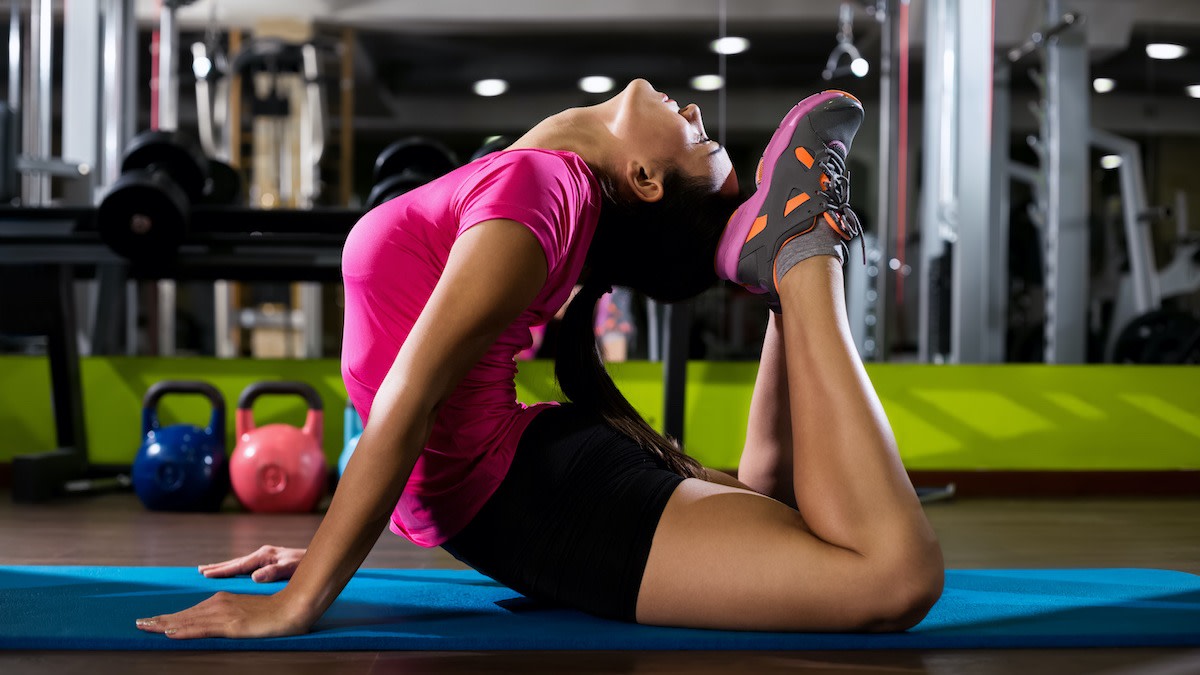5 Pliability Exercises to Improve Your Range of Motion
Written by MasterClass
Last updated: Jan 24, 2022 • 4 min read
Used by NFL players, strength-training coaches, and amateur athletes alike, pliability exercises help build resilient muscles that can withstand impact and support a full range of motion. When practiced regularly, pliability training promotes muscle wellness and injury prevention and alleviates soreness.
Learn From the Best
What Is Pliability?
Pliability describes something that can be easily bent without breaking. By the same token, pliable muscles have high elasticity. Muscle pliability exercises focus on developing muscle tissues, connective tissues, ligaments, and joints that can withstand regular use and easily recover from impact and exertion.
Most pliability exercises fall into the category of myofascial release, self-massage, and manual therapy. These exercises make use of foam rollers, vibrating pliability rollers, and various stretching techniques to soften and lengthen muscles and increase blood flow. In addition to pliability exercises, good nutrition and hydration can promote pliability.
Pliability vs. Flexibility: What’s the Difference?
Flexibility describes the range of motion of a joint, which is contingent upon the pliability of your muscles. Pliability work develops soft, supple muscles that are easily stretched to allow joints to move in a wider range of motion.
5 Pliability Exercises to Improve Your Range of Motion
Foam rolling your muscles is an effective method for developing pliable muscles. Consider working these pliability exercises into your post-workout routine.
- 1. Hamstrings: To foam roll your hamstrings, sit on the floor and place the foam roller under the middle of the back of your upper legs. Place your hands behind you. Push onto your hands to lift your hips off the floor to place pressure from the roller on your hamstrings. Slowly roll up and down, putting pressure on your hamstrings from your knees to the bottom of your glutes until a tender spot is identified. Once you’ve identified the most sensitive part of the muscle, press the foam roller into that spot for 30–90 seconds while relaxing until the discomfort is reduced.
- 2. Quadriceps: To foam roll your quadriceps, lie facedown, placing the middle of your thighs on the foam roller. Place your forearms as if you were performing a plank. Your legs should be straight and your feet should be off the ground. While maintaining good alignment, slowly roll up and down, covering the quad muscles from your hips down to your knees. Use the foam roller to slowly roll your quads until you find the most tender part of the muscle. Hold on that spot for 30–90 seconds while relaxing until the discomfort is reduced.
- 3. Lower back: A foam roller can help release muscle tension in the lower back; however, it's important to avoid putting too much pressure directly on your lower back muscles. If you're experiencing low back pain, the cause may be from tight muscles or muscle knots in another part of your body. Before using a foam roller on your lower back, consider rolling your glutes, hip flexors, and shoulder blades. To foam roll your lower back safely,
- 4. Hip flexors: To foam roll your hip flexors, lie facedown on a yoga mat. Place the top of your left hip on the foam roller. The foam roller should be positioned just below your hip bone. Place your forearms on the floor as if you were performing a plank. Your non-rolling leg should be off the floor with only your toes in contact with the ground. While maintaining your alignment, use your non-rolling leg and arms to slowly roll up and down your hip flexor. Roll from the top of your quad to your hip bone. Roll the front and side of your hip to cover the hip flexors. Then switch to the opposite side and repeat.
- 5. Lats: To foam roll your lats, lie on your side with your arms extended over your head. Rotate your lower shoulder outward and place the foam roller under your arm toward the outside of your armpit. The thumb side of your hand should be facing the ceiling. Slowly roll up and down, covering the side of your upper back below your shoulder blade to your armpit until a tender spot is identified. Use the foam roller to slowly roll your lats until you find the most tender spot. Hold on that spot for 30–90 seconds while relaxing until the discomfort is reduced. Repeat on the opposite side.
How to Work Out Safely and Avoid Injury
If you have a previous or pre-existing health condition, consult your physician before beginning an exercise program. Proper exercise technique is essential to ensure the safety and effectiveness of an exercise program, but you may need to modify each exercise to attain optimal results based on your individual needs. Always select a weight that allows you to have full control of your body throughout the movement. When performing any exercise, pay close attention to your body, and stop immediately if you note pain or discomfort.
To see continual progress and build body strength, incorporate proper warm-ups, rest, and nutrition into your exercise program. Your results will ultimately be based on your ability to adequately recover from your workouts. Rest for 24 to 48 hours before training the same muscle groups to allow sufficient recovery.
Want to Dive Deeper Into Your Wellness Journey?
Throw on some athleisure, fire up a MasterClass Annual Membership, and get ready to sweat it out with exclusive instructional videos from Nike Master Trainer and GQ fitness specialist Joe Holder. Want to improve your cardiovascular endurance? Give Joe’s HIIT workout a go. Trying to get a little swole? He’s got a strength training workout for that. From fitness tips to nutrition hacks, Joe will have you feeling healthier in no time.
